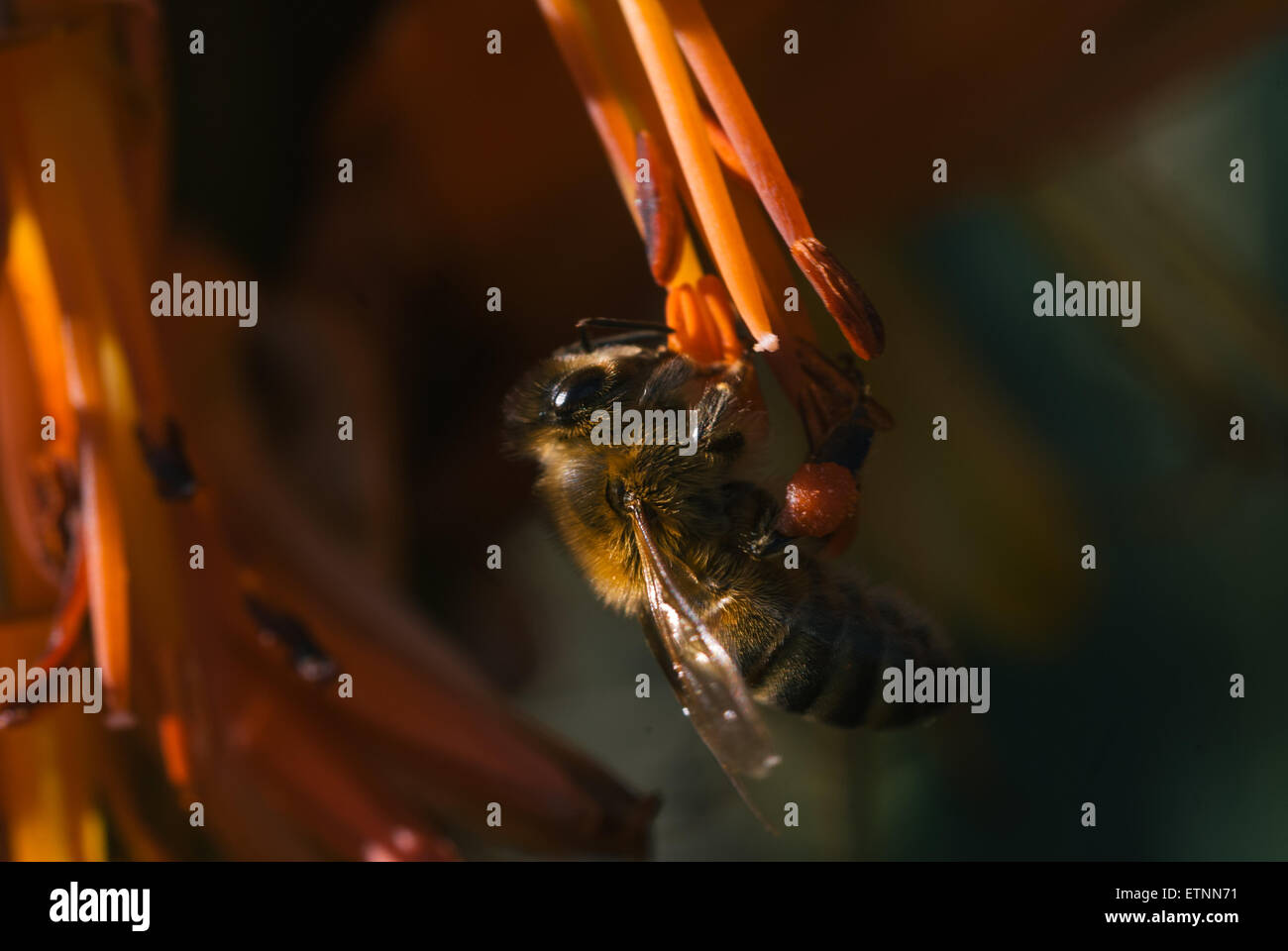Bee on a flower Aloe arborescens, Adelaide, Australia, SA,

Image details
Contributor:
Alexander Kondakov / Alamy Stock PhotoImage ID:
ETNN71File size:
30.6 MB (461.2 KB Compressed download)Releases:
Model - no | Property - noDo I need a release?Dimensions:
4000 x 2678 px | 33.9 x 22.7 cm | 13.3 x 8.9 inches | 300dpiDate taken:
29 June 2013Location:
Adelaide, Australia, SA,More information:
Aloe arborescens (krantz aloe, candelabra aloe) is a species of flowering succulent perennial plant that belongs to the Aloegenus, which it shares with the well known and studied Aloe vera. This species is also relatively popular among gardeners and has recently been studied for possible medical uses. The specific epithet arborescens means "tree-like". Aloe arborescens is a large multi-headed sprawling succulent, its specific name indicating that it sometimes reaches tree size.[2]Typical height for this species 2–3 metres (6.6–9.8 ft) high. Its leaves are succulent and are green with a slight blue tint. Its leaves are armed with small spikes along its edges and are arranged in rosettes situated at the end of branches.[3] Flowers are arranged in a type of inflorescence called a raceme. The racemes are not branched but two to several can sprout from each rosette. Flowers are cylindrical in shape and are a vibrant red/orange color.[2] Taxonomically, it forms part of the Arborescentes series of very closely related Aloe species, together with Aloe pluridens andAloe mutabilis. Distribution[edit] Aloe arborescens is endemic to the south eastern part of Southern Africa. Specifically, this range includes the countries of South Africa, Malawi, Mozambique and Zimbabwe.[3] It has the third largest distribution amongst the aloe genus.[2] Although Aloe arborescens has adapted to many different habitats, its natural habitat usually consists of mountainous areas including rocky outcrops and exposed ridges. Its common name krantz aloe refers to the Afrikaans word "krantz", which means a rocky cliff. Its habitat can vary and is one of only a few species of aloe that is found growing from sea level up to the tops of mountains.